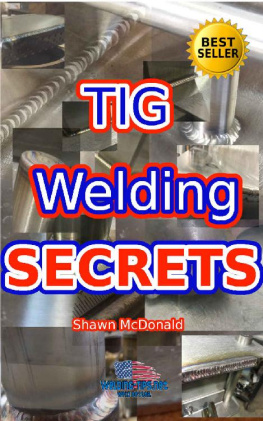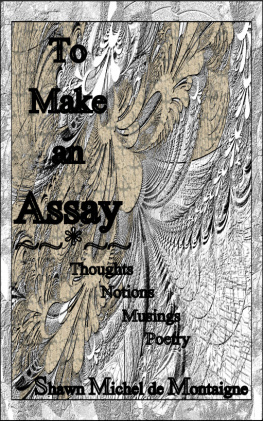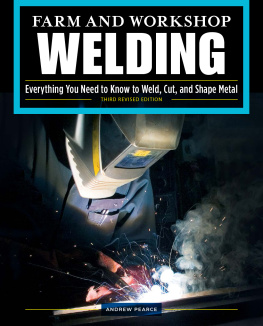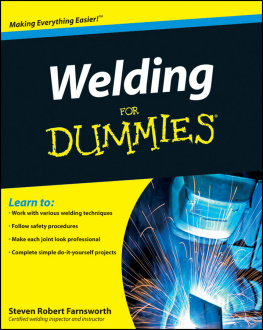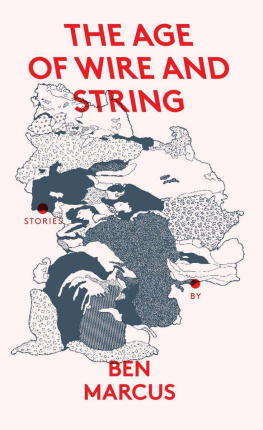TIG WELDING SECRETS
Shawn J. McDonald 2017
www.Welding-Tips.net
A bout the author
Hi, thank you for purchasing this book. My name is Shawn McDonald, and I have been welding for about 14 years now. I started off in my parents garage with a craftsman 60amp wire feed 110v welder that I bought to try and shave the door handles on my 1987 Chevy s10. I started from there and continued working my way up the ranks, and eventually went on to do ASME boiler/pressure vessel welding, and lots of high end fabrications. I wrote this book because I truly enjoy helping people perfect their craft, and I felt like I may be able to contribute my own experiences and history to help someone just learning the trade better figure things out. No welder is ever done learning, so heres my personal take on TIG welding. And if you like my book, Please be sure to check out my website and YouTube channel at www.welding-tips.net
Introduction
Of the 3 most common types of welding, (SMAW, GMAW, and GTAW), GTAW, Gas Tungsten Arc Welding also known as TIG welding, (or Heliarc if you're talking to someone old school) is the most versatile of the welding processes. It can be used on any material, it produces the cleanest and best penetrating welds, and it allows you much more control over how the weld lays down. With MIG welding or stick welding, the filler material acts as the electrode, meaning its constantly feeding filler material into the puddle. With TIG, you have the option of slowing down, using less filler, and working the puddle to achieve the look and size weld you need.
In addition to control over how much filler is added, you have control over how much heat is being put into the workpiece as well. This can be advantageous in situations where you are bridging a large gap, and you have to add a lot of filler material, so the weld moves along slowly and starts to overheat. You can back off the pedal without losing the arc or gas coverage, and cool the puddle down and continue welding. This makes TIG welding great for doing plug welds, filling holes and doing build ups.
Another fun fact is that TIG welds are typically softer than MIG welds or stick welds. Which means they grind easier, and hammer and form easier, so if you are working with some sheet metal and you need to do some hammering around an area you welded, its much less likely to crack if you TIG welded it. The weld nugget is more malleable which makes it much easier to manipulate.
If you do a lot of ornamental or detail work like picture frames, art work, railings, awnings, light fixtures, that kind of thing, you will most likely be grinding and blending a lot of welds for aesthetics. TIG is the way to go because it gives you more control over the weld, with the ability to input less heat.
In this book, I will talk about my approach to TIG welding. I will show you the different things I look at, and different techniques and tips that may help you improve your technique, And even if you are an experienced welder, its always nice to see how other people work, to gain outside perspective.
Getting Started
All TIG welders have a pretty similar layout. You have a TIG torch, a ground clamp, and a foot pedal or finger switch. Torches vary in size but most are similar in design. Some will have a gas valve built in, some will have a switch built in. some have a flex head, there are elongated torches, close access torches, pencil torches, Just about any torch configuration you can imagine is out there..
Torches have a standardized sizing, so all manufacturers of a #20 torch will use #20 compatible hardware. This is great because you dont have to deal with proprietary consumables that are hard to find. This is an issue with MIG welders, but has been improving over time. When Chinese made welders started becoming available on the internet, You'd see them up for sale when the company went out of business and it used some proprietary hardware that you could only order from the same manufacturer.
The foot pedal controls the amperage on the machine, and can be substituted for a thumb wheel or slider on the torch handle, or just an on/off switch as I prefer myself. There are several modes of operation for these torch mounted remotes, so I always recommend looking into some of them. I have used some interesting ones. You have thumb wheels, sliders, paddles, pushbuttons, and one that I used most recently was a paddle but it had 4 clicks which gave you incremental amperage. Somewhat like a torch mounted foot pedal. It did take a little while to get used to, But once I was used to it, I really liked it.
There are simple momentary pushbuttons, which is what I currently have, And there are some that stay on when you press and release the button, And only turn off when you press the button again. You can get pretty creative with a remote switch in terms of your technique as wel. You still have options for tapering off the arc on many machines. You can play with downslope and upslope settings on the machine to do manual pulse welding where you get full current as long as you hold the switch, but when you let go the amperage starts to taper off, Then you pulse it again to keep the puddle flowing. I've found that useful in situations, especially where you are filling a hole or a gap and you dont want the puddle to get too hot and drop out on you.
Beyond the basic layout of the machine, the first step to producing high quality welds is making sure your machine is setup correctly for the material you are running. Most materials will be welded using DC current. However, some like aluminum and magnesium require AC current to be welded. So, your first step is going to be to determine what material you will be working with. Your TIG machine may only be DC capable, which will limit you to doing steels and stainless steels for the most part. Most machines are similar, and you will want to get the manual for yours to figure out specific settings, but they all have a pretty similar basic layout. Theres going to be a process selector (dc+, dc-, or AC), an amperage control, usually some type of mode selector for stick or TIG, and usually a switch for high frequency or lift arc.
Many newer inverter-based welders have several options to allow you to better dial in your arc. These will include pre/post flow gas, which allows you to adjust the length of time the shielding gas is on before and after the arc starts and stops. Post flow is usually more commonly found, not all machines have pre-flow. Post-flow is helpful in reducing pinholes and crater cracks on arc stops.
In addition to pre-and post-flow gas controls, many newer welders will include a pulse feature. What this does is pulse the arc at a specific frequency to keep the heat input down. On some older machines the pulse feature allows a very limited number of pulses per second, which makes it more useful in dabbing neatly stacked welds, however with many newer inverter machines, you can pulse up to 150, 250+ pulses per second. The advantage to this, is it allows you to maintain penetration while keeping heat input down. This is useful on stainless steel where warping is a big concern.
Some more full featured welders will have different settings for wave balance on the ac setting, which allows you to adjust the arc to get more cleaning action vs, more penetration. The difference is in how the arc focuses on the material. When you have more cleaning action set, the arc is going to be 'wider' and wont penetrate as deep down into the metal. the wider arc causes the oxidation layer on aluminum to break up a bit.
Some TIG welders will have a selector to allow you to use a foot pedal or a finger switch. I recommend getting a torch mounted switch or amptrol, because in the long run it will make you a more versatile welder. Relying on the pedal gets you too used to working sitting down, and makes it difficult to work out of position. It also allows you to be lazy in selecting your heat.
Next page
